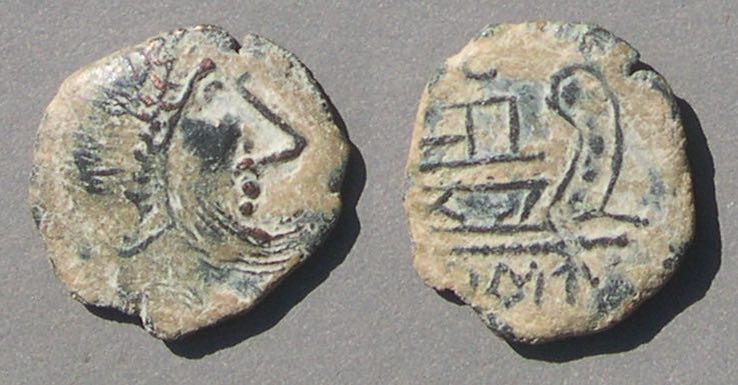
Imitation Republican semis, Spanish provenence
AE18-16. 10:00. 3.06 grams.
Laurete head right, huge nose, beard sweeping forward
/ prow right, attempt at "ROMA" legend below
Roman Republican AE imitations
Republican AE coins were struck in vast numbers in the first half of the second century BC. The as was discontinued in 146 BC, and only small numbers of lower denominations continued to be struck until 135-127 BC, when large issues of semisses and quadrantes were struck. Then production returned to very small numbers until 90 - 87 BC (the War between the Allies = Social War) when production of asses was temporarily resumed. After that, there were only a few very small issues until Augustus resumed regular production of aes. The old AE coins remained in circulation for decades. Today most specimens are very worn.
Apparently, the need for additional small-denomination coins prompted the production of imitations, probably in the second half of the first century BC. Crawford and Stannard have drawn attention to the "many" imitations of minor bronze coins of the late Republic. These imitations are found in central Italy and Spain, but very rarely seen on the market in the US. All the Republican imitations on this page are of semisses from Spain, where official semisses are rarely found.

Imitation Republican semis, Spanish provenence
AE18-16. 10:00. 3.06 grams.
Laurete head right, huge nose, beard sweeping forward
/ prow right, attempt at "ROMA" legend below
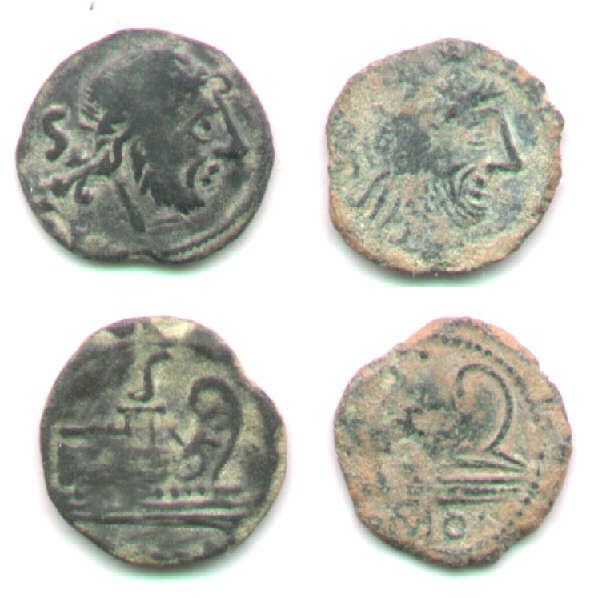
Spanish semisses.
Left: 20 mm. 3.26 grams. 5:00.
Right: 19 mm. 3.04 grams. 5:00.
Clear "S" for semis on each side of the coin on the left.
The coins on the right has at least "..MO.." in exergue, which is part of "ROMA" retrograde.
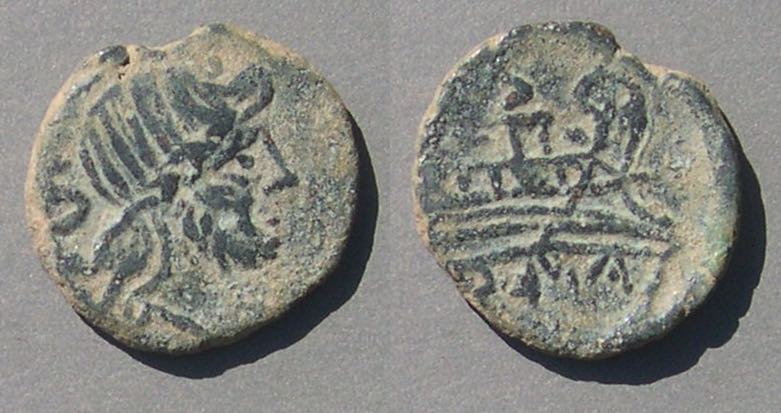
18 mm. 4.13 grams. 11:30.
Light highlights over black patina. Clear "S" on each side.
/Fragments of "ROMA" below.
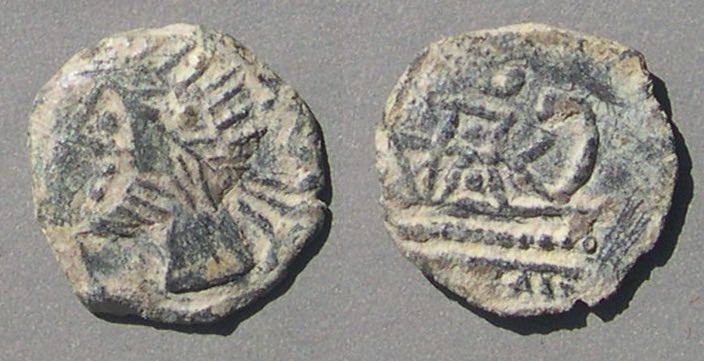
17 mm.. 3:00. 2.62 grams.
Unusual bust left. Crude, shaggy style.

Four small imitation semisses from Spain.
Type: Head of Saturn right, S behind/prow right, ROMA in exergue, S above. ("S" for semis.)
First/Left) AE17-15, 2.19 grams. 7:30. S behind head and (tilted) above prow. Part of "ROMA" below prow.
Second) AE15-14. 1.60 grams. 6:00. Backwards S behind head. S above prow. "OMA" of "ROMA" below prow.
Third) AE16-15. 1.83 grams. 9:00. Big nose, small eye, and prominent laurel wreath. S above prow, parts of "ROMA" below.
Fourth/Right) AE15-13. 1.73 grams. 4:30. Big nose, large dot for eye. Parts of "ROMA" clear.
Provenence: Found in the south of Spain in the region near Seville (This type is most commonly found near Cadiz, Seville, and Cordoba).
Crawford (reference below), plate XI, numbers 21-25 are quite similar.
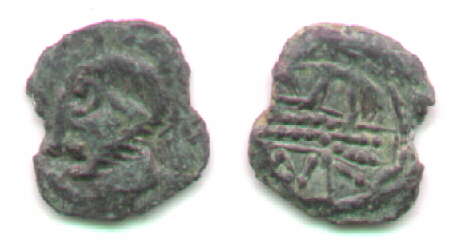
Ragged AE16-14. An imitation semis.
Very crude head left/design of dots and lines -- a crude prow right.
References:
Michael Crawford, "Unofficial imitations and small change under the Roman Republic," AIIN 29 (1982) 139-164, plates I-VIII and pages 22-226 and plates IX-XI. His number 16 is quite similar. Numbers 14 and 17 are also bust left/design. See also plate XI, 40. Italo Vecchi, who inspected it, thinks this piece is from Spain (by style) and said (in 1996) it was the crudest he had seen.
Ripollés and Witschonke, "The Unofficial Roman Republican Semisses Struck in Spain," in Studies in Ancient Coinage in Honor of Andrew Burnett, edited by Bland and Calomino, pages 51-96 and plates 47-58. Available from Academia.edu .
Clive Stannard, "Overstrikes and imitative coinages in Central Italy in the Late Republic," draft manuscript, August 1997.
Michael L. Thomas, in AJN 12 (2000) pp.113-117 and plate 20, discusses a single AE24 (6:00, 3.96 grams) left-facing imitation semis in close to official style found in a northern Etruria (Italy) controlled excavation and says the archaeological context would put his particular piece between 211 and 150 BC, perhaps close to 189 BC, much earlier than Crawford put the bulk of the series. That coin is from Italy, not Spain, and even if it truly is earlier, it would not be much evidence for the dates of the coins illustrated above.
Continue with "Claudius (AD 41-54) and related AE imitations."